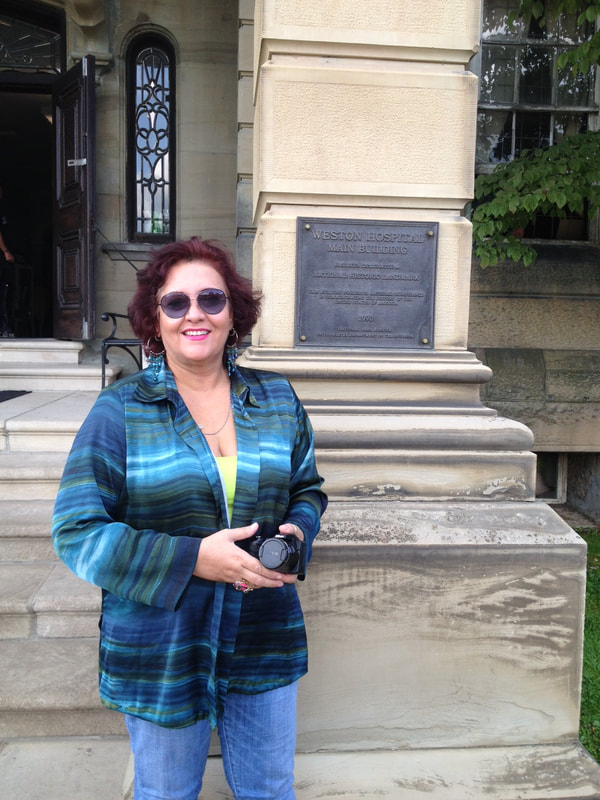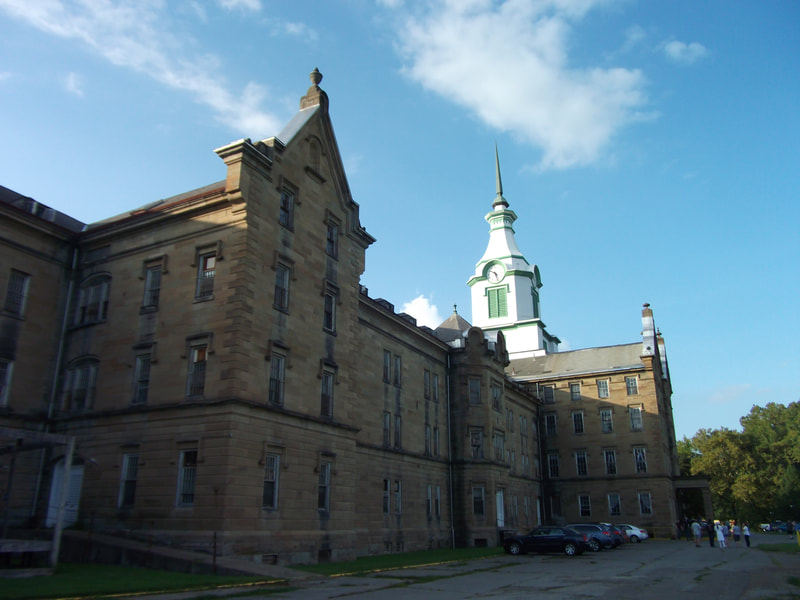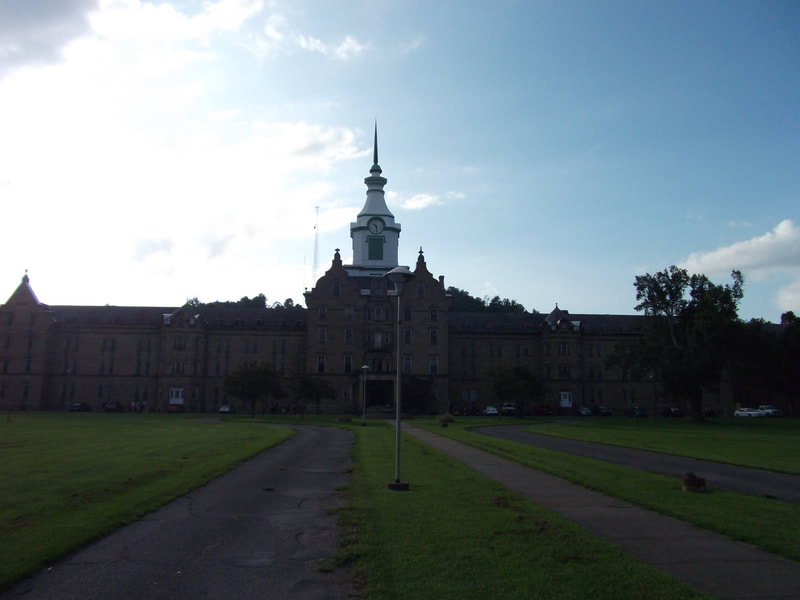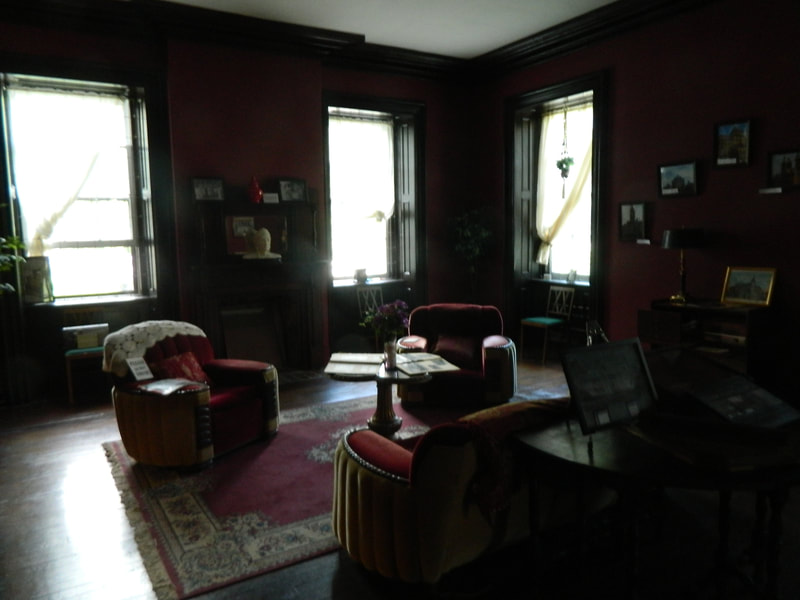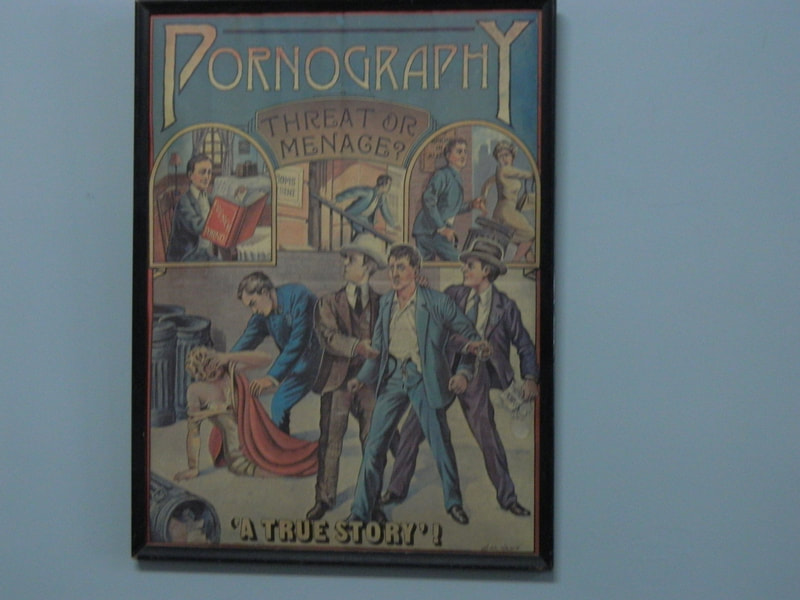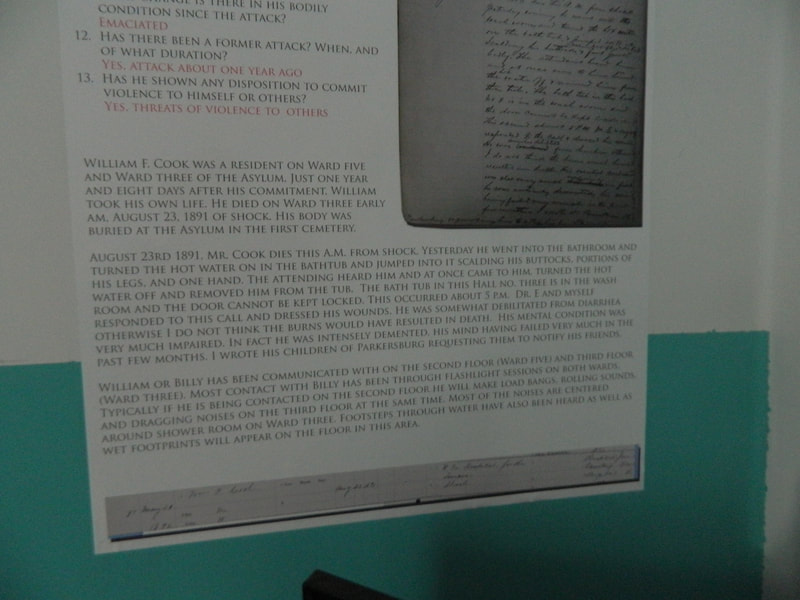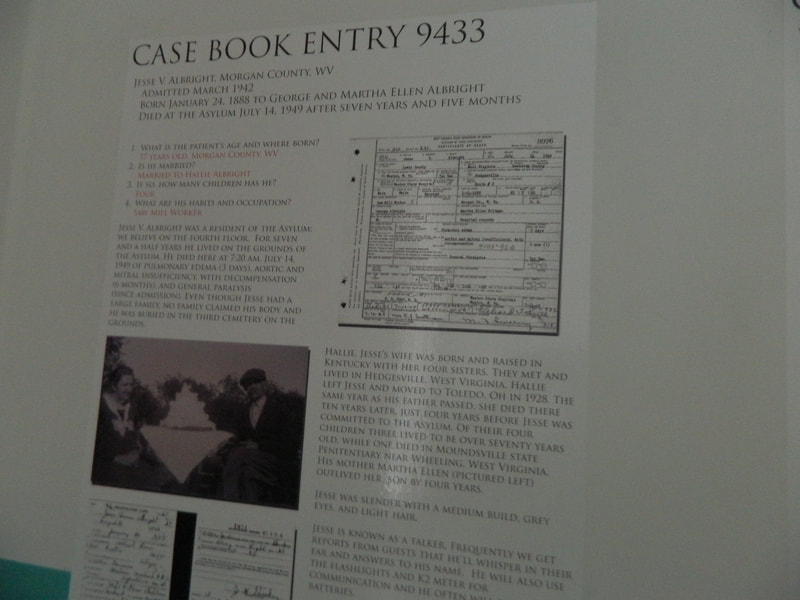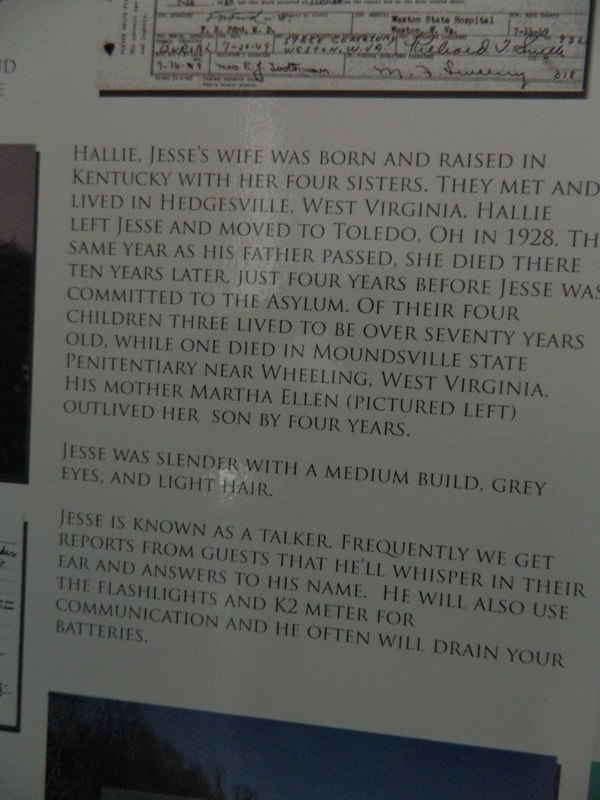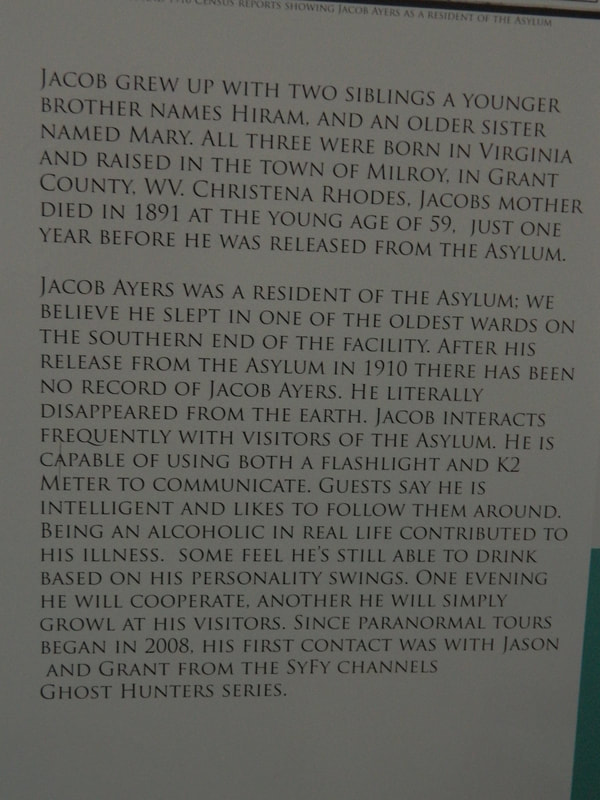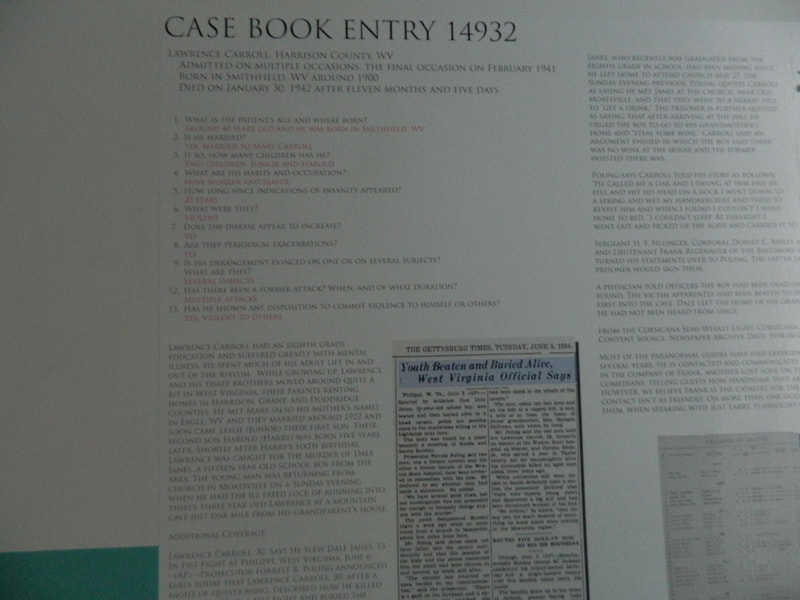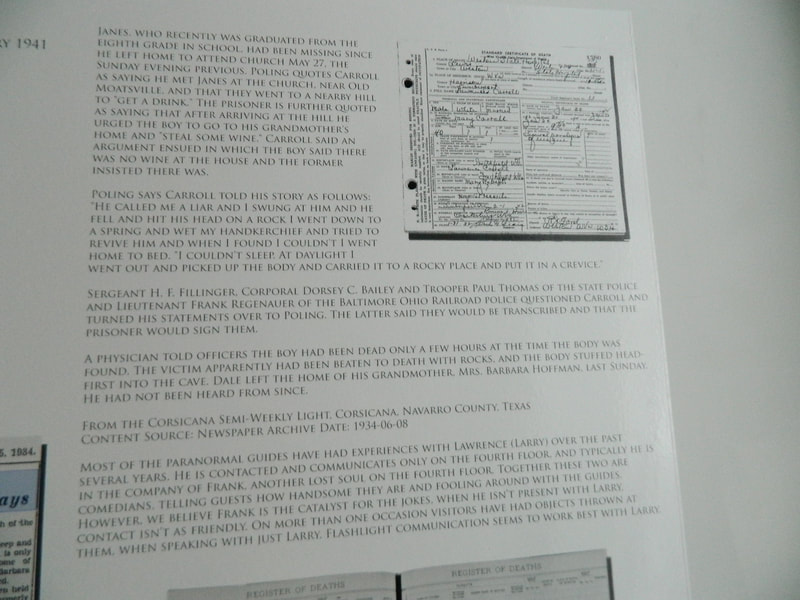Trans-Allegheny Lunatic Asylum
Reston, West Virginia
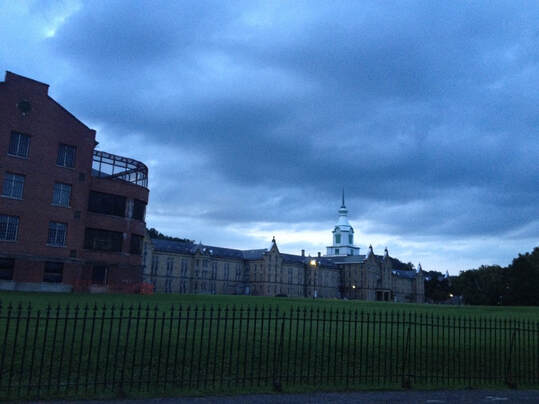 Trans-Allegheny Lunatic Asylum c.2014
Trans-Allegheny Lunatic Asylum c.2014
Formerly known as the Weston State Hospital, the Trans-Allegheny Lunatic Asylum was built on 666 acres and was meant to serve as a sanctuary for the mentally ill when it opened in 1864. Most of the early work was done by prison labor, although the final stonework was completed by skilled stone masons brought in from Europe. The Trans-Allegheny Lunatic Asylum began taking residents in 1861 long before it was completed, and patients were continually added until the structure was completed some 20 years later. It was still in operation as an asylum in 1994 when it was closed. It was reopened in 2007 to host historic and paranormal tours.
Originally built to house only 250 patients, by the 1950's its population had increased to approximately 2,400 patients in what was described as overcrowded and poor conditions. Prior to the 18th century when persons displaying aberrant behavior could be brought to an asylum like Trans-Allegheny, they were thought to be possessed, and treatment of these persons was barbaric especially if they had no family or friends to take responsibility for them. Many ended up in prisons, and even when they had families they were mostly hidden away without any attempt to cure them or help them assimilate back into society since insanity was considered incurable.
The first floor has a wing that is called the Civil War Wing which is the oldest part of the hospital and is considered one of the most haunted, as is the 4th floor, even though the entire facility is considered haunted. Many treatments that are now considered barbaric were used such as electro-shock therapy, lobotomies, and ice-water baths among others. Not only did patients die of natural causes, many committed suicide or killed other patients or nurses. Many female workers were raped. In one case, a nurse mysteriously went missing while on duty in the asylum. Her rotting body was found two months later at the bottom of a stairwell in an obscure corner of the building.
Walking through the empty hallways and rooms, where peeling paint and barred windows encourage the belief that proof of residual hauntings such as footsteps and the sound of gurney wheels are self-evident, Miami Ghost Chronicles’ investigators Henry and Marlene felt that many souls who either lived or worked in this location still walk the shadows. No EVPs or photos were gathered during the walk through the building owing mostly to a lack of time, however personal experiences such as darting shadows, and noises heard at the end of empty hallways confirmed that TALA is indeed a very haunted structure.
Originally built to house only 250 patients, by the 1950's its population had increased to approximately 2,400 patients in what was described as overcrowded and poor conditions. Prior to the 18th century when persons displaying aberrant behavior could be brought to an asylum like Trans-Allegheny, they were thought to be possessed, and treatment of these persons was barbaric especially if they had no family or friends to take responsibility for them. Many ended up in prisons, and even when they had families they were mostly hidden away without any attempt to cure them or help them assimilate back into society since insanity was considered incurable.
The first floor has a wing that is called the Civil War Wing which is the oldest part of the hospital and is considered one of the most haunted, as is the 4th floor, even though the entire facility is considered haunted. Many treatments that are now considered barbaric were used such as electro-shock therapy, lobotomies, and ice-water baths among others. Not only did patients die of natural causes, many committed suicide or killed other patients or nurses. Many female workers were raped. In one case, a nurse mysteriously went missing while on duty in the asylum. Her rotting body was found two months later at the bottom of a stairwell in an obscure corner of the building.
Walking through the empty hallways and rooms, where peeling paint and barred windows encourage the belief that proof of residual hauntings such as footsteps and the sound of gurney wheels are self-evident, Miami Ghost Chronicles’ investigators Henry and Marlene felt that many souls who either lived or worked in this location still walk the shadows. No EVPs or photos were gathered during the walk through the building owing mostly to a lack of time, however personal experiences such as darting shadows, and noises heard at the end of empty hallways confirmed that TALA is indeed a very haunted structure.
The Ghosts of the Trans-Allegheny Lunatic Asylum (TALA)
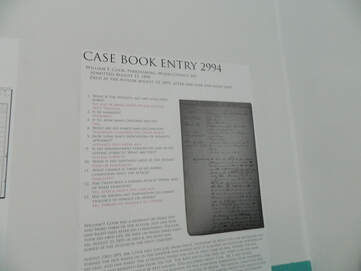 Wm. Cook casebook entry received 1891
Wm. Cook casebook entry received 1891
William Cook (Born ? - 1891)
William “Billy” Cook was a resident on Ward 5 and Ward 3. Shortly after being committed for 1 year he took his own life on August 23rd, 1891. He died of shock after turning the hot water on in the bathtub and jumping into it and scalding many parts of his body. He was described as intensely demented. His ghost has been communicating via flashlight sessions mostly on the 2nd floor (Ward 5) and the 3rd floor (Ward 3) centering around the shower room. He also produces loud bangs, rolling and dragging noises and the sound of footsteps through water.
Jesse Albright (1888-1949)
Jesse Albright died on July 14th, 1949 after living at TALA for over 7 years. He died from organic illness in his body, and his extended family claimed his body and he was buried on the grounds in the 3rd cemetery. Jesse’s ghost is reported as a “talker” who whispers in guests’ ears and he is known to answer to his name. He also communicates via a flashlight and a K2 meter. He also drains batteries.
Jacob Ayers
(released from TALA 1910)
Jacob was born and grew up in West Virginia; however after his release from TALA nothing else was heard from him again. In life he was known to be an alcoholic who contributed to his illness. While he was a resident of the asylum it is believed he slept in one of the oldest wards on the southern end of the facility. As a ghost he interacts with visitors using a flashlight, a K2 meter, and he is known to follow them around. At times he is cooperative, however other times he growls at visitors, and even though he probably has been walking the hallways of the asylum for many years, he was first documented in 2008 by Jason and Grant from Ghost Hunters.
William “Billy” Cook was a resident on Ward 5 and Ward 3. Shortly after being committed for 1 year he took his own life on August 23rd, 1891. He died of shock after turning the hot water on in the bathtub and jumping into it and scalding many parts of his body. He was described as intensely demented. His ghost has been communicating via flashlight sessions mostly on the 2nd floor (Ward 5) and the 3rd floor (Ward 3) centering around the shower room. He also produces loud bangs, rolling and dragging noises and the sound of footsteps through water.
Jesse Albright (1888-1949)
Jesse Albright died on July 14th, 1949 after living at TALA for over 7 years. He died from organic illness in his body, and his extended family claimed his body and he was buried on the grounds in the 3rd cemetery. Jesse’s ghost is reported as a “talker” who whispers in guests’ ears and he is known to answer to his name. He also communicates via a flashlight and a K2 meter. He also drains batteries.
Jacob Ayers
(released from TALA 1910)
Jacob was born and grew up in West Virginia; however after his release from TALA nothing else was heard from him again. In life he was known to be an alcoholic who contributed to his illness. While he was a resident of the asylum it is believed he slept in one of the oldest wards on the southern end of the facility. As a ghost he interacts with visitors using a flashlight, a K2 meter, and he is known to follow them around. At times he is cooperative, however other times he growls at visitors, and even though he probably has been walking the hallways of the asylum for many years, he was first documented in 2008 by Jason and Grant from Ghost Hunters.
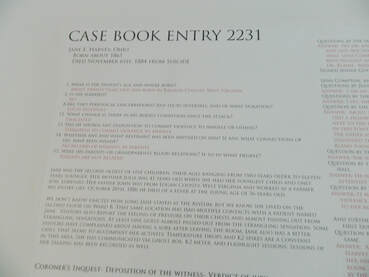 Jane Harvey intake form c.1884
Jane Harvey intake form c.1884
Jane Harvey (1865-1884)
Jane died by her own hand on November 6th, 1884. It is unknown how long she was actually at the asylum. She lived on the 2nd floor on Ward B. At this location many visitors have had contact with an entity named Jane. Visitors have complained of pressure on their chests, and a strangling sensation. Jane’s presence is presaged by a bitter chill in the air and spikes on the K2 meter. She has been recorded on EVPs.
Lawrence “Larry” Carroll (1900-1942)
Larry was admitted on multiple occasions to TALA the last time being in 1941. He only had an 8th grade education and suffered greatly from mental illness in which he exhibited violent behavior towards others. Larry was apprehended in connection to the murder of a local 15 year old boy, who was killed by Larry on his way back from church to his grandmother’s home, and whose body was found in a cave. He was was beaten and then buried alive.
Communication with Larry is usually on the 4th floor, and he keeps company with another ghost named Frank. Contact with Larry has an unfriendly tone as objects have been thrown at visitors.
Jane died by her own hand on November 6th, 1884. It is unknown how long she was actually at the asylum. She lived on the 2nd floor on Ward B. At this location many visitors have had contact with an entity named Jane. Visitors have complained of pressure on their chests, and a strangling sensation. Jane’s presence is presaged by a bitter chill in the air and spikes on the K2 meter. She has been recorded on EVPs.
Lawrence “Larry” Carroll (1900-1942)
Larry was admitted on multiple occasions to TALA the last time being in 1941. He only had an 8th grade education and suffered greatly from mental illness in which he exhibited violent behavior towards others. Larry was apprehended in connection to the murder of a local 15 year old boy, who was killed by Larry on his way back from church to his grandmother’s home, and whose body was found in a cave. He was was beaten and then buried alive.
Communication with Larry is usually on the 4th floor, and he keeps company with another ghost named Frank. Contact with Larry has an unfriendly tone as objects have been thrown at visitors.
